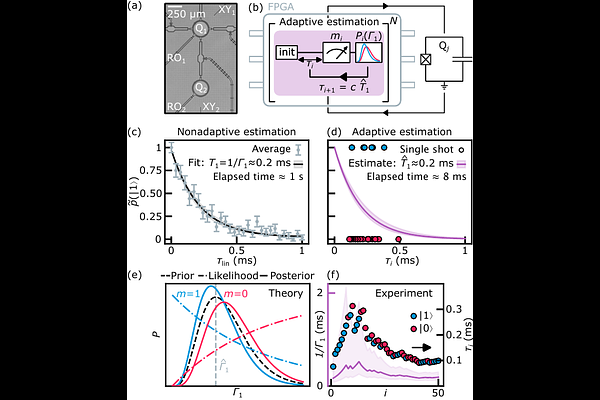Real-time adaptive tracking of fluctuating relaxation rates in superconducting qubits

Real-time adaptive tracking of fluctuating relaxation rates in superconducting qubits
Fabrizio Berritta, Jacob Benestad, Jan A. Krzywda, Oswin Krause, Malthe A. Marciniak, Svend Krøjer, Christopher W. Warren, Emil Hogedal, Andreas Nylander, Irshad Ahmad, Amr Osman, Janka Biznárová, Marcus Rommel, Anita Fadavi Roudsari, Jonas Bylander, Giovanna Tancredi, Jeroen Danon, Jacob Hastrup, Ferdinand Kuemmeth, Morten Kjaergaard
AbstractThe fidelity of operations on a solid-state quantum processor is ultimately bounded by decoherence effects induced by a fluctuating environment. Characterizing environmental fluctuations is challenging because the acquisition time of experimental protocols limits the precision with which the environment can be measured and may obscure the detailed structure of these fluctuations. Here we present a real-time Bayesian method for estimating the relaxation rate of a qubit, leveraging a classical controller with an integrated field-programmable gate array (FPGA). Using our FPGA-powered Bayesian method, we adaptively and continuously track the relaxation-time fluctuations of two fixed-frequency superconducting transmon qubits, which exhibit average relaxation times of approximately 0.17 ms and occasionally exceed 0.5 ms. Our technique allows for the estimation of these relaxation times in a few milliseconds, more than two orders of magnitude faster than previous nonadaptive methods, and allows us to observe fluctuations up to 5 times the qubit's average relaxation rates on significantly shorter timescales than previously reported. Our statistical analysis reveals that these fluctuations occur on much faster timescales than previously understood, with two-level-system switching rates reaching up to 10 Hz. Our work offers an appealing solution for rapid relaxation-rate characterization in device screening and for improved understanding of fast relaxation dynamics.